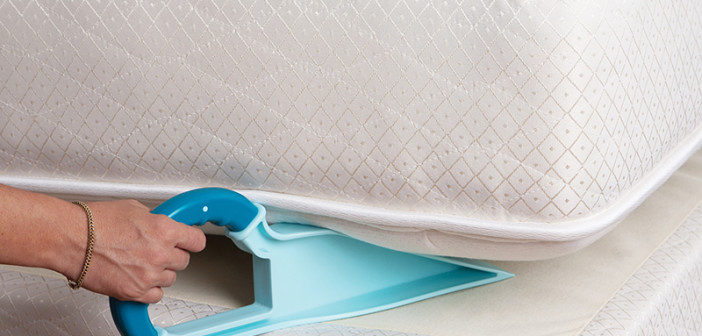WEST PALM BEACH, FL—Nearly 60% of people skip making their beds in the morning, avoiding a tedious daily task housekeepers are forced to complete nearly 30 times a day. And, this mundane task has its challenges: repeatedly lifting and turning king-size mattresses can result in unnecessary injuries and, ultimately, additional costs for hotels.
“Of all the workers in a hotel, room attendants are, statistically, among the highest group with on-the-job injuries,” said Jim Stover, SVP/Loss Control, Real Estate & Hospitality Practice, Arthur J. Gallagher & Co. “They often suffer from soft-tissue injuries due to repetitive motion and heavy lifting. When making a bed, they frequently assume awkward postures and lift heavy objects (the mattress), which could result in injury.”
Injuries resulting from day-to-day housekeeping tasks are common in hospitality, so rampant, in fact, that the Division of Occupational Safety and Health in California, known as Cal/OSHA, has been holding advisory committee meetings on the topic since October 2012 in an attempt to help “control the risk of musculoskeletal injuries and disorders to housekeepers in hotels and other lodging establishments.”
A document presented to the committee in March 2013 revealed the number-one job-task associated with injury for a housekeeper: making beds (nearly 30%). The authors pulled data on state workers in the Workers’ Compensation Information System.
Funded by the Occupational Safety and Health Administration, the Institute for Ergonomics at Ohio State University published a pamphlet on how house managers can improve housekeeping work by using ergonomics, which is defined as “the science of designing jobs, equipment and workplaces to fit the person.” The two-page document outlines alternative work methods for standard housekeeping tasks, including vacuuming, pushing supply carts, cleaning bathrooms and bed-making. One way for hotels to limit injuries while housekeepers are making beds is to invest in fitted sheets instead of flat sheets, but there are alternative ways to avoiding injuries. Under the heading of “products to consider,” the use of tools is also suggested for bed-making.
“A few years ago, I was thinking of a product design to make putting on fresh bed skirts more easily,” said Sam Montross, CEO of Cadence Keen Innovations (CKI). “It is such a difficult job. To solve that challenge, I designed the Bed MadeEZ Mattress Lifter.”
CKI redesigned the product four times, and each time spent “quite a bit on the prototypes to test the product.” The company also relied upon suggestions from customers.
Made of polypropylene, the Bed MadeEZ Mattress Lifter has an inclined wedge designed to assist hotel housekeepers with separating and lifting mattresses between four to five inches. The level ledge holds the mattress in a raised position, and the curved handle allows the user to grip the Bed MadeEZ at a “natural wrist position.” There are three steps to using the patented tool correctly: (1) identify the insertion point; (2) slide the Bed MadeEZ in at an angle; and (3) push it in all the way back to the handle.
“It lifts and holds up a mattress so the room attendants have no strain on their backs and shoulders, leaving both hands free to do their job,” Montross said. “Not only that, they can use it to tuck in the sheets, put on bed skirts and smooth sheets.”
“The effectiveness and utility of the BedMade EZ was obvious,” said Stover, who recognized its potential. “It lessens the likelihood of material-handling injuries by reducing the amount of weight lifted, and eliminates awkward bending and reaching.”
More than 2,000 hotels worldwide are using the product. “The Bed MadeEZ Mattress Lifter is now a standard at every Disney hotel around the world,” said Montross. “HEI has also made it a standard, and Hyatt is finalizing its testing to do the same.” Housekeepers are using the tool daily at properties associated with Loews, Holiday Inn, Hawthorn Suites, Hilton, Harrah’s and the Hotel Nikko, which is situated in San Francisco.
“Hotels tend to purchase only one tool per room attendant,” Montross said. “If they would use two at a time, it would speed up the making of the beds and work even better for removing sheets, putting on skirts, etc. Some hotel room attendants use two but most use one. Hotel room attendants have between 15-20 rooms a day to service.”
Going into 2017, CKI is focused on producing an updated video to illustrate “all the clever uses of the tool,” which sells for about $19 per unit, depending on the quantity.
“And, yes, we do have other products we are planning to launch in 2017,” she said. “Everything we consider or design is built to the rigorous needs of the industry.” HB


